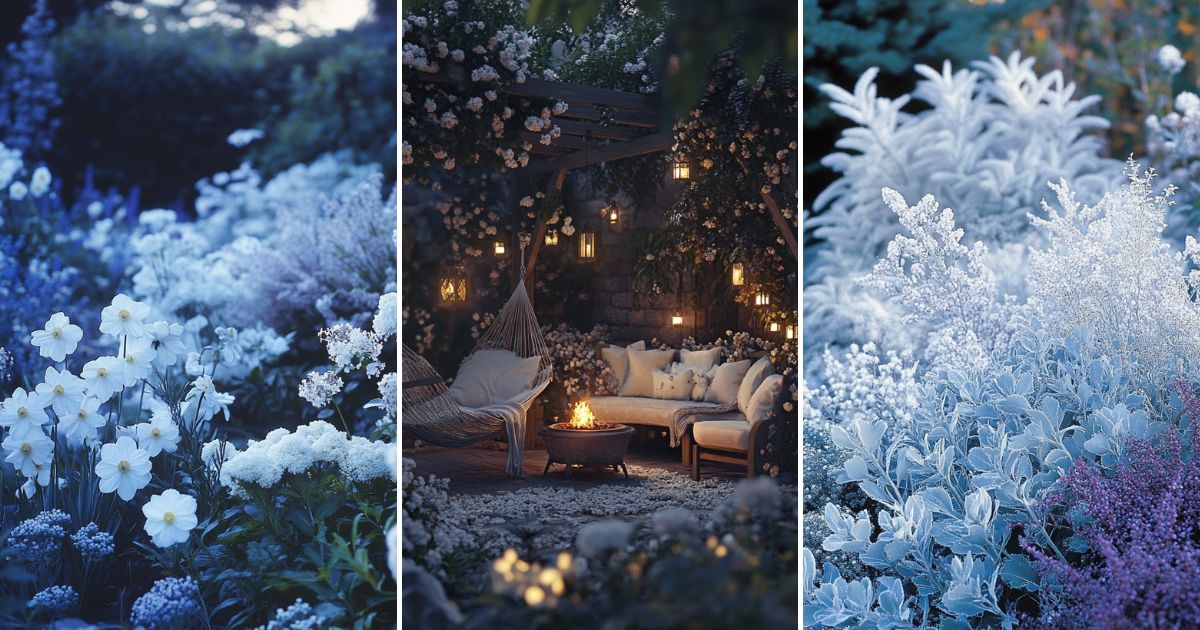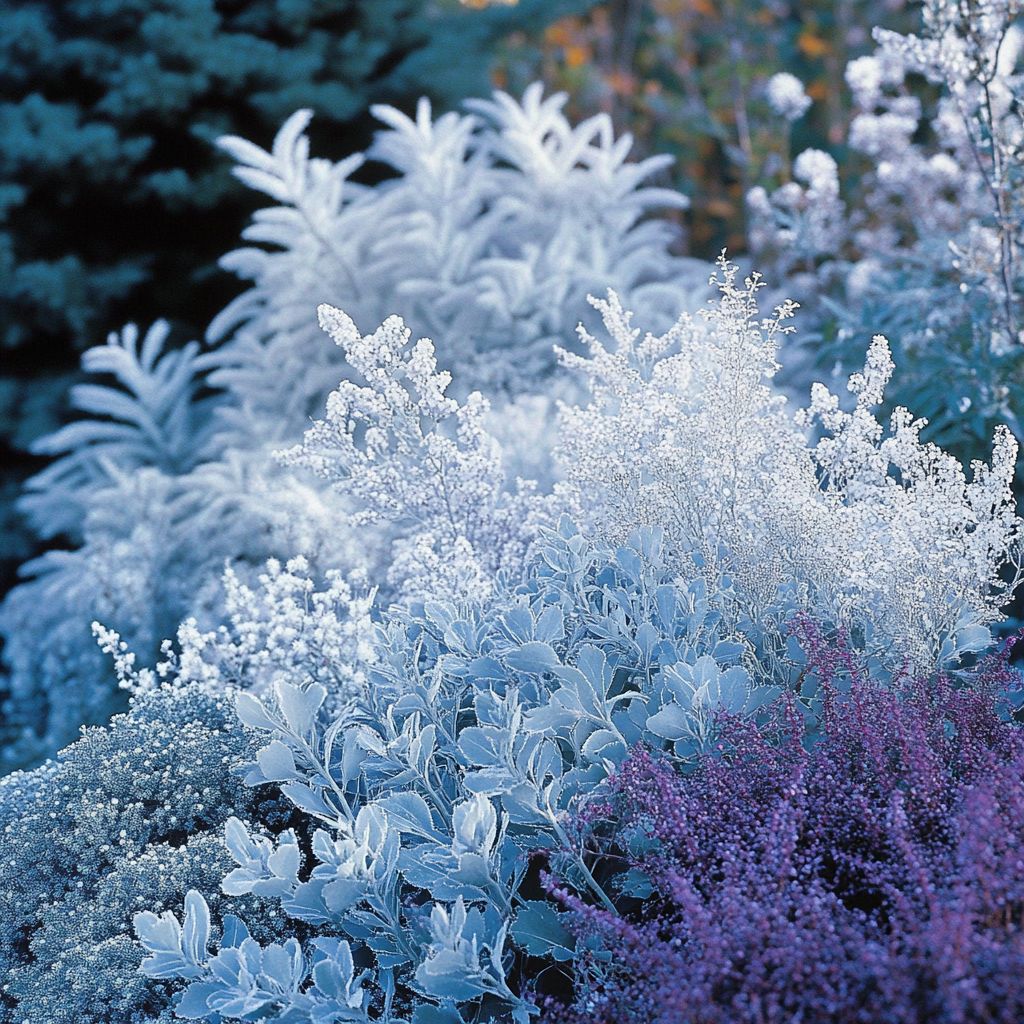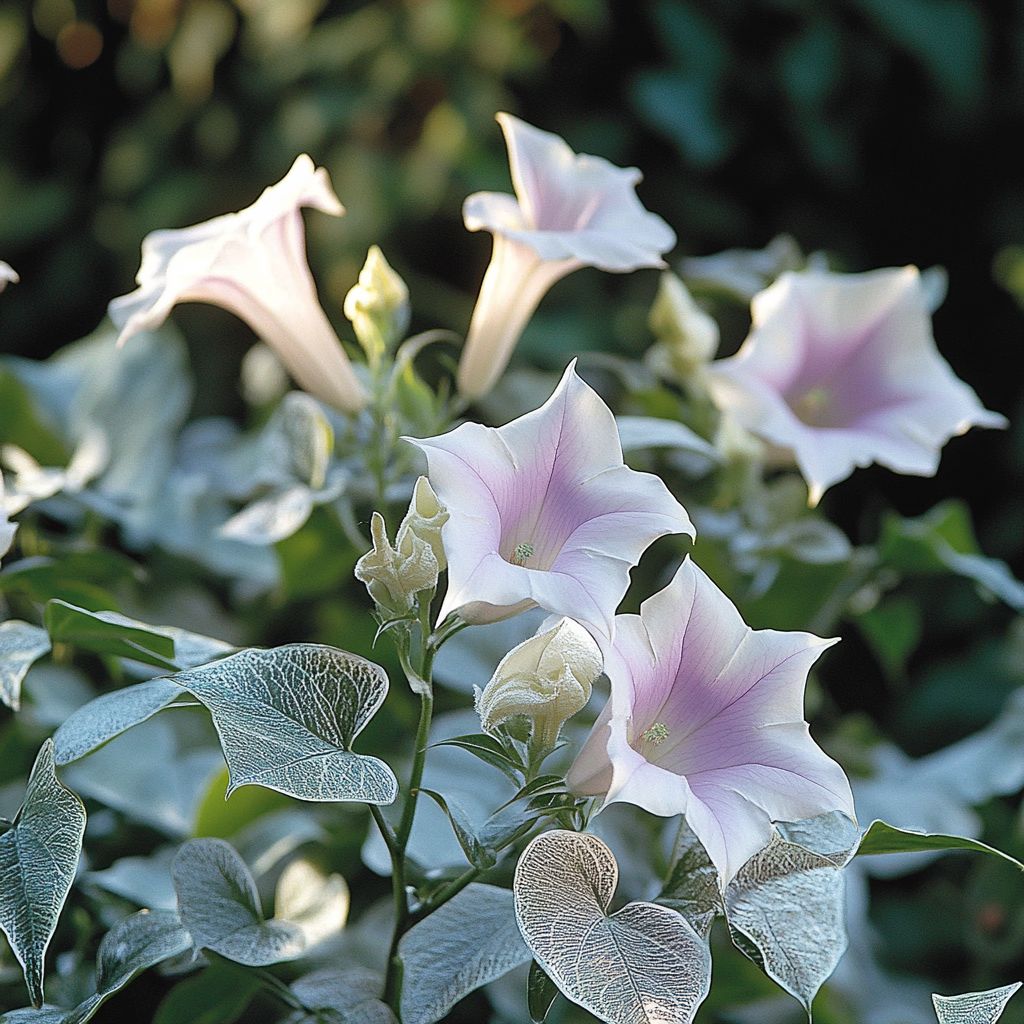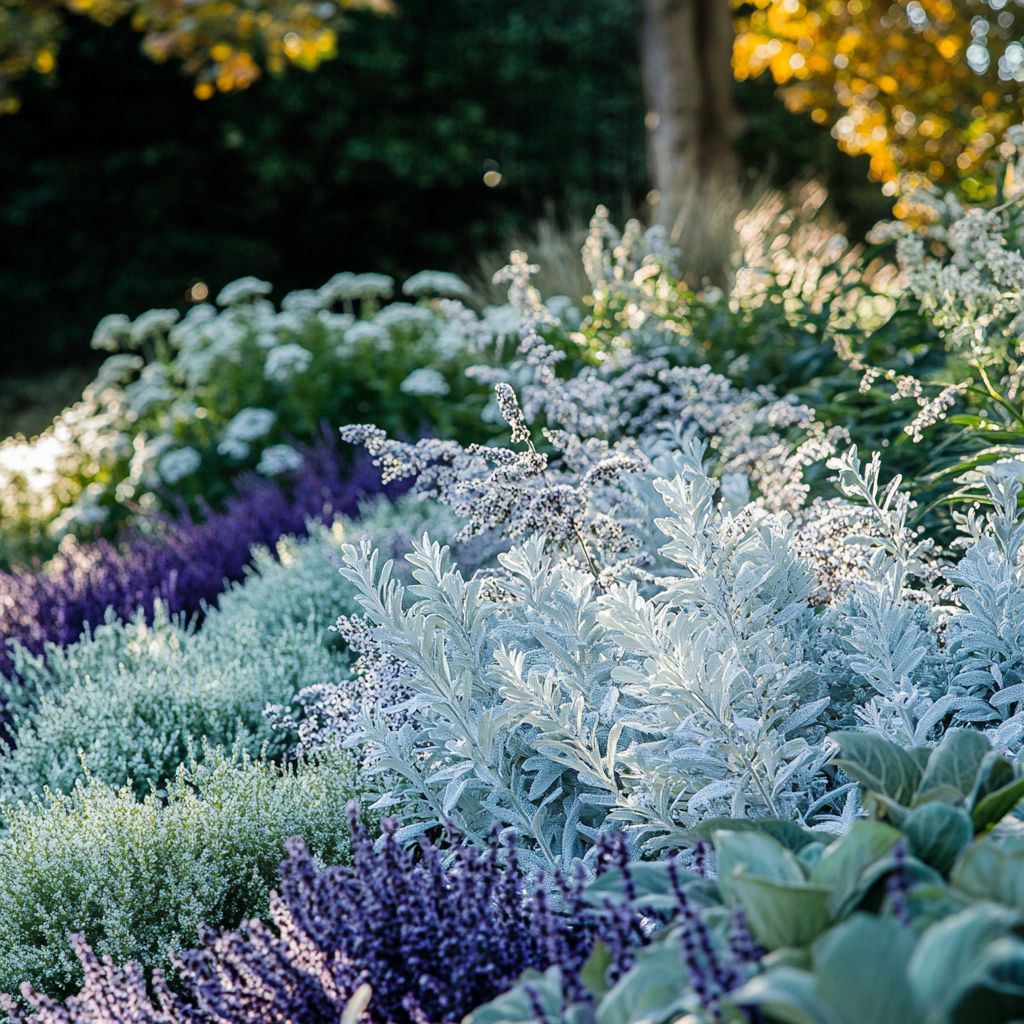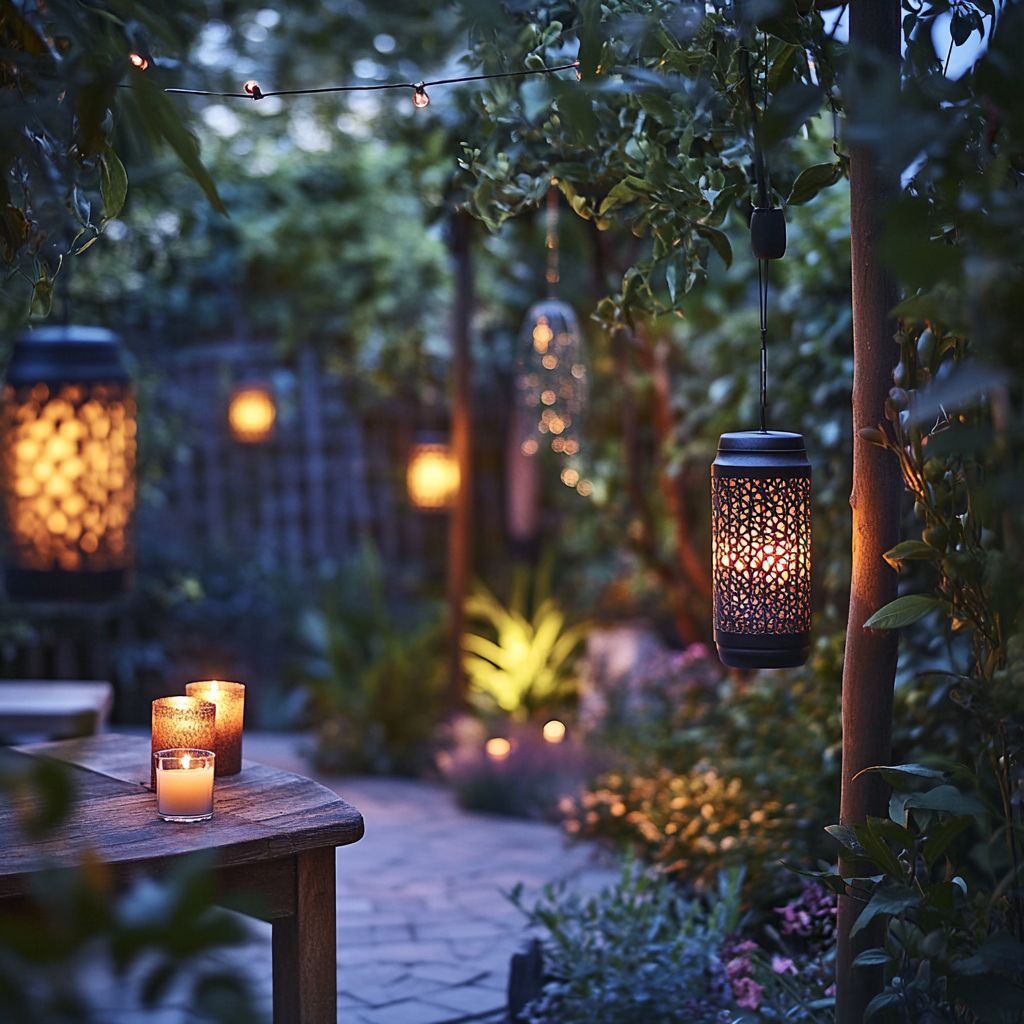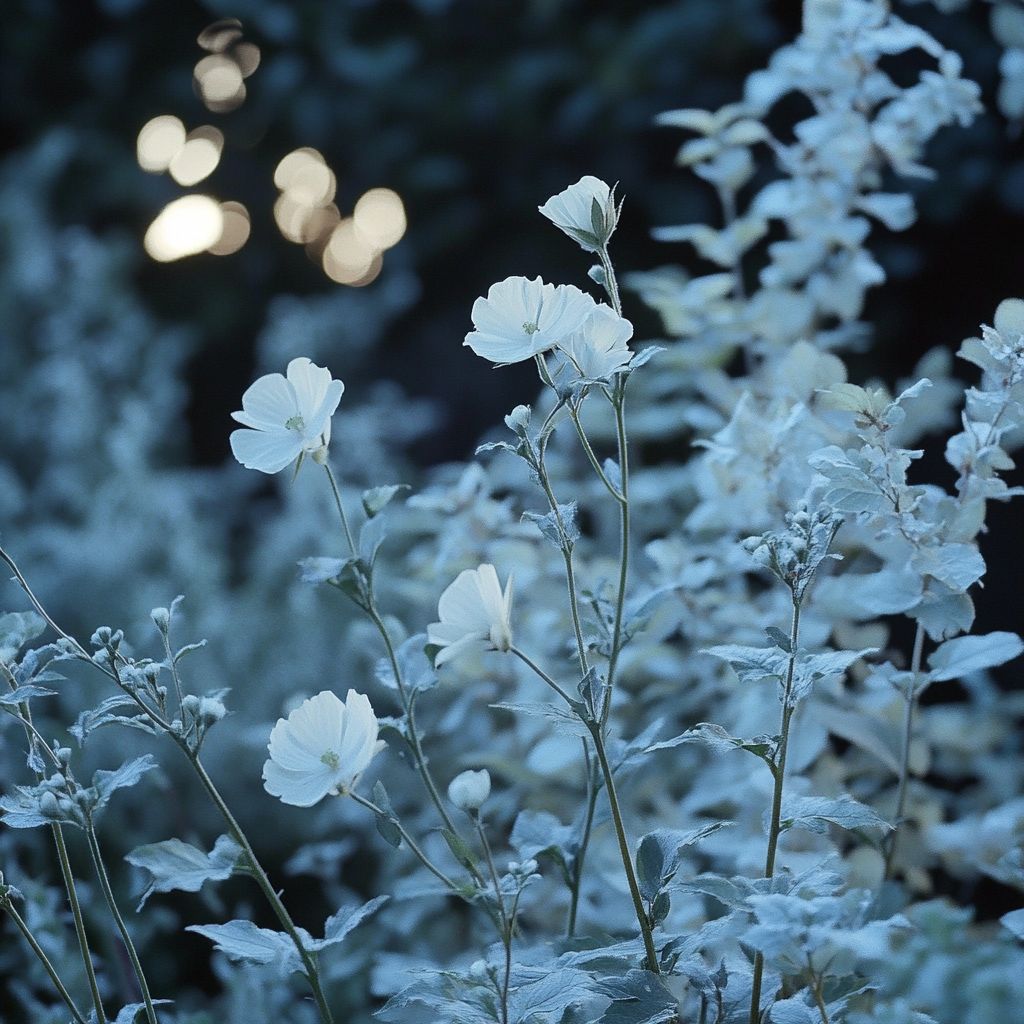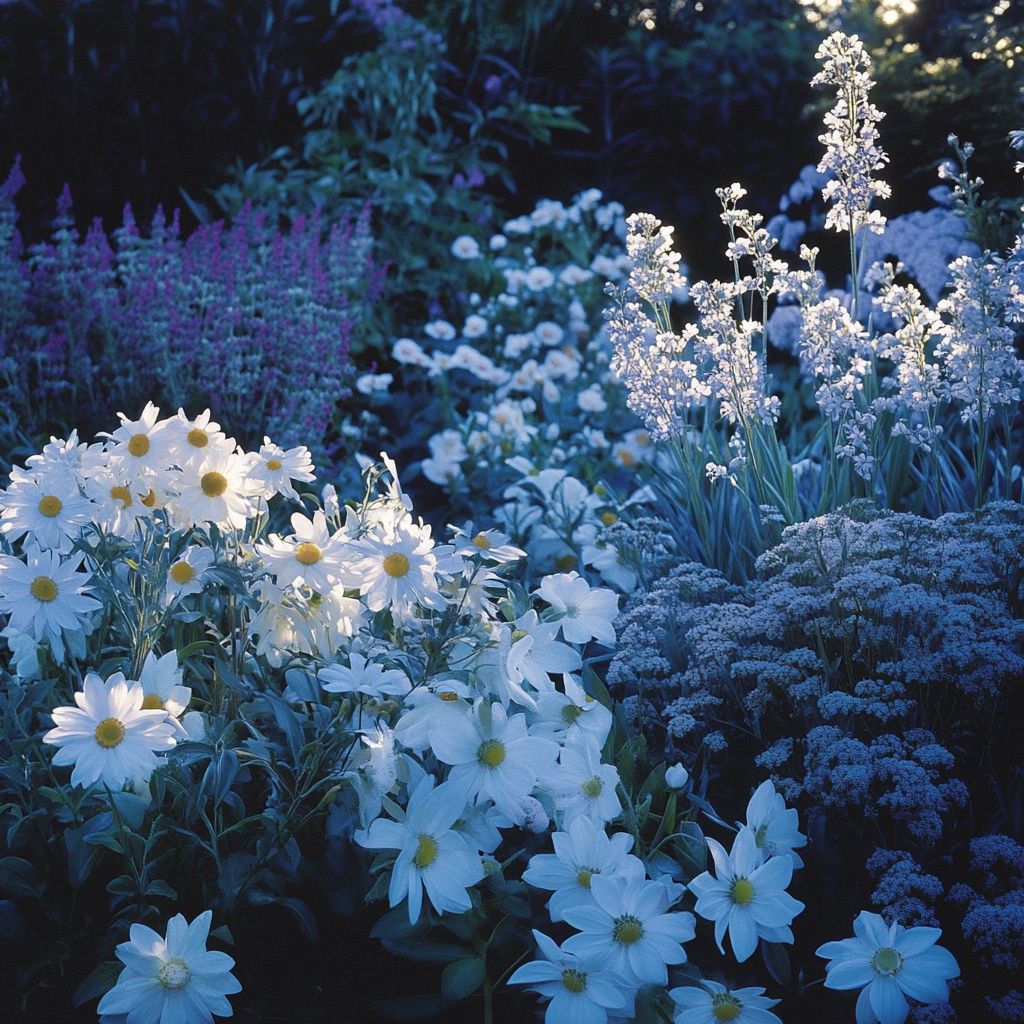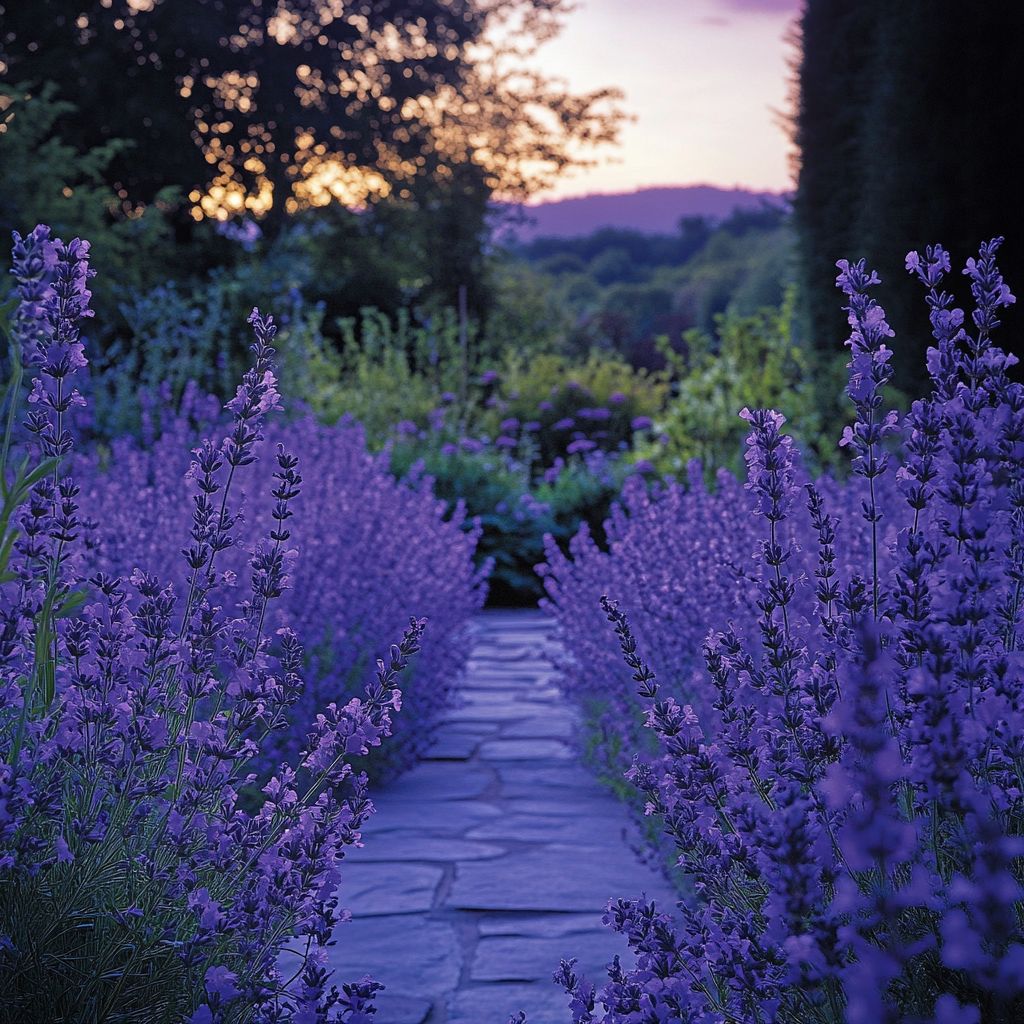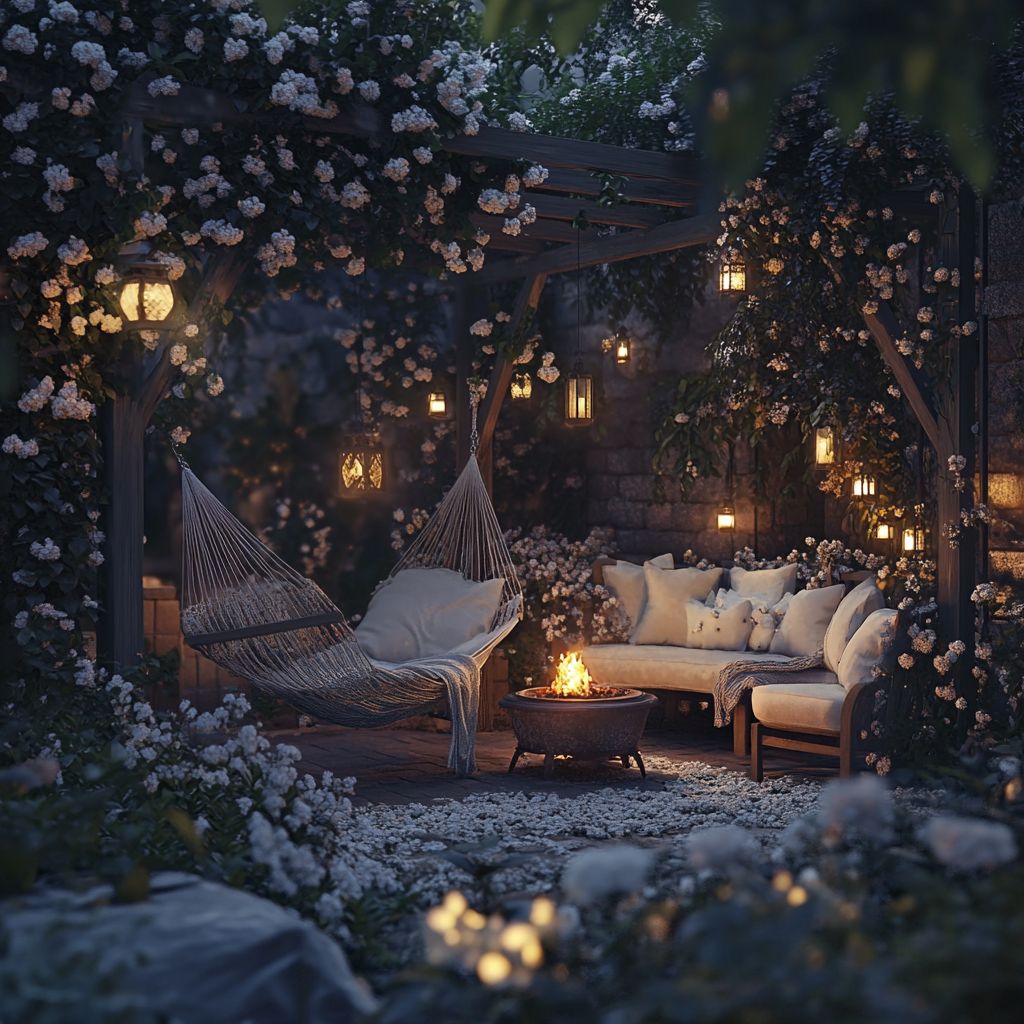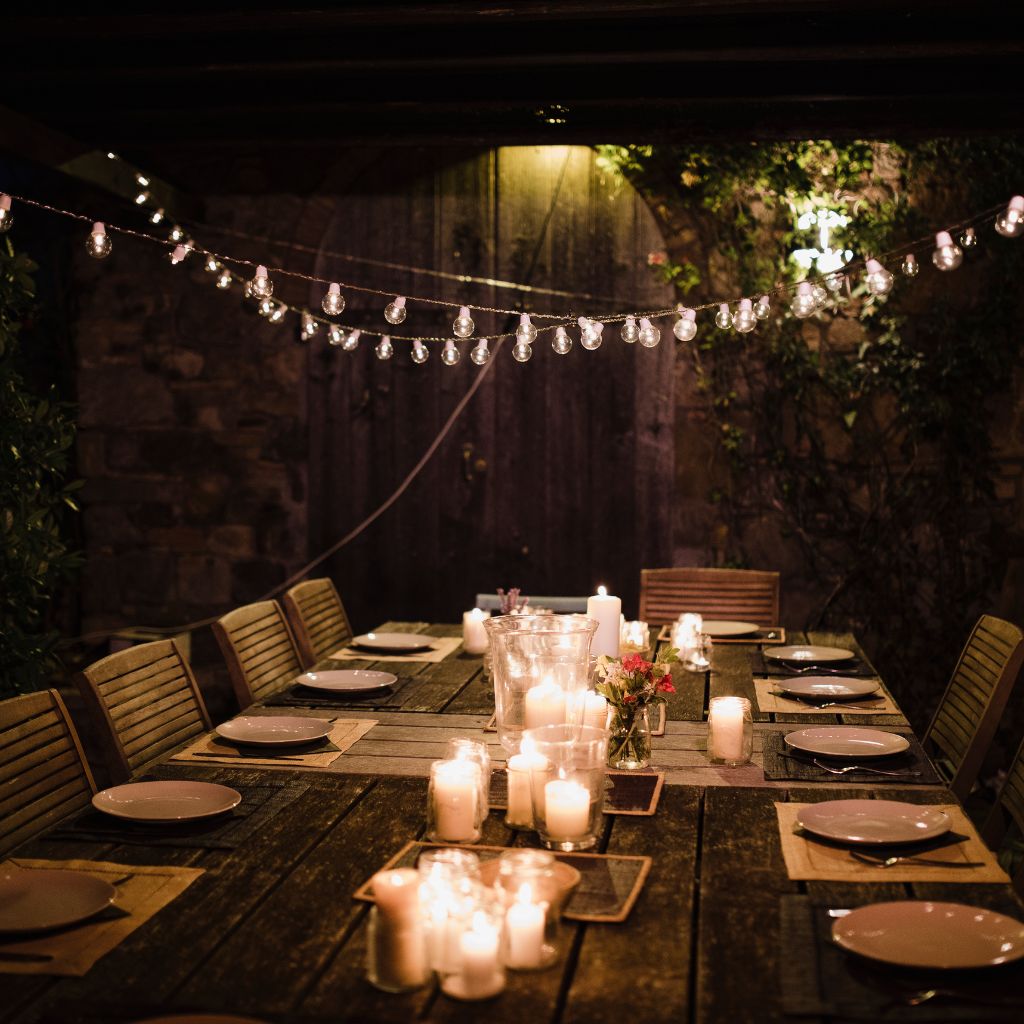There’s something undeniably enchanting about a garden that comes alive at night. Imagine walking outside under the soft glow of the moon, surrounded by fragrant blooms and glowing white flowers that shimmer in the night air.
That’s the magic of a moon garden—a tranquil, reflective space designed to be enjoyed when the sun sets, offering a serene atmosphere for relaxation, meditation, and evening gatherings.
Creating a moon garden is easier than you might think, and with the right plants and thoughtful design, you can transform any outdoor space into a nighttime sanctuary.
Let’s walk through the steps of designing your own moonlit paradise, one inspired by the timeless charm and elegance of nature.
What is a Moon Garden?
A moon garden is a unique space designed to be enjoyed primarily after dusk. It’s a garden that’s been carefully curated with light-colored flowers, silvery foliage, and aromatic plants that glow and release fragrance in the evening.
The goal is to create a peaceful, ethereal experience, where plants interact beautifully with the subtle light of the moon.
In addition to white or pale-colored blooms, a moon garden often includes night-blooming flowers and plants with foliage that reflects moonlight. This combination creates a mystical, glowing effect that captivates the senses.
Choosing the Right Location
The first step in designing your moon garden is to choose the perfect location. Ideally, it should be a space that receives ample moonlight, whether it’s a small corner in your backyard or a larger garden area.
Observe your yard during a full moon to identify spots that are naturally illuminated. If your garden receives limited moonlight, don’t worry—a few well-placed outdoor lights can help create the same effect.
When planning your space, think about where you’re most likely to spend time in the evenings. A patio or seating area near your moon garden can enhance the experience, allowing you to enjoy the sights, smells, and sounds of your nighttime oasis.
Design Elements for a Moon Garden
A magical moon garden doesn’t just happen overnight—it requires thoughtful design choices to achieve its enchanting effect. Here’s how to get started:
1. Color Palette
The star of a moon garden is its color scheme. Stick to a palette of whites, silvers, soft blues, and pale purples.
These lighter shades catch and reflect moonlight, creating a radiant glow after dark. White flowers, in particular, stand out beautifully against the dark backdrop of the night sky.
Some great options for white-blooming plants include:
Moonflower (Ipomoea alba): A fragrant, night-blooming vine that opens in the evening and closes by morning.
White Daffodils (Narcissus): Classic, elegant flowers that bloom in early spring.
Shasta Daisies (Leucanthemum x superbum): These cheerful perennials are long-lasting and provide a bright glow in the moonlight.
2. Fragrance
Fragrance is a key element in any moon garden. Many night-blooming flowers release their scents in the evening, adding an aromatic layer to the experience.
Lavender, jasmine, and gardenias are all excellent choices for adding fragrance to your garden. Imagine the heady perfume of night-blooming jasmine as you relax in the cool evening air—it’s pure bliss.
Here are a few fragrant night bloomers to consider:
Night-Blooming Jasmine (Cestrum nocturnum): Known for its intoxicating fragrance that fills the air at night.
Angel’s Trumpet (Brugmansia): A tropical shrub with large, trumpet-shaped flowers that release a sweet scent after dark.
Mock Orange (Philadelphus coronarius): A deciduous shrub with sweetly scented, creamy white flowers.
3. Foliage
The silvery shimmer of foliage can add another layer of magic to your moon garden. Plants with silver, gray, or variegated leaves reflect the soft light of the moon, enhancing the garden’s glow.
Choose plants like lamb’s ear, dusty miller, and Artemisia for their silvery hues.
Other foliage plants to consider:
Lamb’s Ear (Stachys byzantina): A soft, velvety plant that adds texture and a silvery touch to your garden.
Silver Sage (Salvia argentea): This low-growing perennial has large, fuzzy silver leaves that catch the light beautifully.
Russian Sage (Perovskia atriplicifolia): This hardy plant boasts tall, wispy stems and soft purple blooms that add both color and texture.
Nighttime Accents: Lighting and Décor
While the moon is your primary source of light in a moon garden, a few carefully placed lights can enhance the ambiance.
Choose soft, warm lighting that won’t overpower the natural glow of the moon. Lanterns, string lights, and solar-powered garden lights are perfect for creating a soft, magical glow.
Consider these lighting tips:
Pathway Lighting: Use solar-powered lights or soft LED fixtures to gently illuminate pathways, making them easy to navigate at night.
Moon Mirrors: Mirrors strategically placed in the garden can reflect moonlight and create the illusion of a larger, more luminous space.
Candles and Lanterns: For an intimate evening glow, place candles or lanterns on tables, benches, or garden edges. Opt for citronella candles to keep mosquitoes at bay while adding a charming, flickering light.
To further enhance the mood, add decorative accents such as reflective water features or shimmering wind chimes.
A small fountain can create soothing sounds of trickling water, adding to the tranquil atmosphere. Silver or white garden sculptures can also serve as focal points during the day and evening.
Moon Garden Plant Selection
Now that you have a vision for your moon garden’s design, let’s talk about the best plants to create that ethereal, glowing space.
1. White and Pale-Colored Flowers
White flowers are the hallmark of any moon garden. They reflect moonlight, standing out against the dark backdrop of the night. Look for flowers that bloom in the evening or are at their best after the sun sets.
Here are some top choices:
Moonflower (Ipomoea alba): A vine with large, white blooms that open at night.
Evening Primrose (Oenothera biennis): This plant opens its yellowish-white flowers in the evening, attracting nocturnal pollinators.
White Lilies (Lilium): Majestic and aromatic, lilies are stunning both day and night.
2. Silver and Gray Foliage
Plants with silvery or gray foliage play a crucial role in reflecting the moonlight. Their leaves catch the glow, adding depth and texture to your garden.
Consider these options:
Dusty Miller (Senecio cineraria): A classic choice for moon gardens, with soft, silvery leaves.
Artemisia (Artemisia ludoviciana): Known for its aromatic, silvery foliage that thrives in moonlit gardens.
3. Night-Blooming Plants
Night-blooming plants are the true stars of a moon garden. These flowers wait until dusk to open, filling the air with their sweet fragrance and dazzling your garden with their beauty.
Some of the best night-bloomers include:
Four O’Clocks (Mirabilis jalapa): These vibrant flowers open in the late afternoon and stay open through the night.
Datura (Datura metel): Also known as “devil’s trumpet,” this plant’s large, white blooms are a stunning sight after dark.
Maintaining Your Moon Garden
Once your moon garden is planted, maintenance is key to keeping it looking magical. Regular watering, deadheading, and pruning will help keep your plants healthy and blooming throughout the season.
Watering: Many moon garden plants, such as silver-foliage plants, are drought-tolerant, but be sure to water them during dry spells to keep them thriving.
Deadheading: Remove spent flowers to encourage continuous blooms and prevent your garden from looking untidy.
Mulching: A layer of mulch will help retain moisture, suppress weeds, and give your moon garden a polished appearance.
Creating a Peaceful Space to Enjoy Your Moon Garden
Your moon garden is meant to be a place of relaxation, so don’t forget to add a comfortable seating area where you can fully immerse yourself in the nighttime magic.
Whether it’s a cozy bench, a few Adirondack chairs, or a hammock, create a spot that invites you to unwind and enjoy the tranquility.
Consider adding these final touches:
Soft Cushions and Throws: Comfortable seating is essential for enjoying your moon garden well into the evening. Opt for weather-resistant fabrics in soft whites or pale shades to match your garden’s color palette.
A Fire Pit or Chiminea: For cooler evenings, a fire pit can provide warmth and light, extending the time you can spend in your garden.
Creating a magical moon garden is a rewarding and enchanting endeavor. By thoughtfully selecting night-blooming flowers, silvery foliage, and fragrant plants, you can design a space that glows in the moonlight and soothes the soul.
Whether you’re enjoying a peaceful moment alone or entertaining friends on a balmy evening, your moon garden will provide a mystical, serene retreat that transforms your nights into something truly special.
Embrace the quiet beauty of the night and let your garden become a reflection of the moon’s soft, silvery light—your very own slice of magic.
